The Science of Spelling
What is the Science of Spelling?
The Science of Spelling is a systematic approach that involves understanding the relationship between sounds and written symbols.
It utilizes the large body of Science of Reading research to implement evidence-based best practices and strategies to teach and practice spelling. Learning to spell is a key ingredient to becoming a good reader and is far more intricate than just memorizing words.
There are a plethora of words containing the spelling patterns and sounds taught in elementary school. Committing each word to memory would be an enormous and daunting task for any learner. Instead, The Science of Spelling teaches children to recognize spelling patterns and highlights notable exceptions. Words are taught in context and linked to other words with similar patterns in order to fully explore their meanings.
Why is Spelling Important?
Research confirms that spelling enhances young children’s ability to read and write. However, as children get older, the continued teaching of appropriate spelling practices (spelling patterns; studying the meaning of roots, prefixes, and suffixes; the historical development of the English language; and words’ language of origin) could provide them with significant benefits (Moats, 2005).
Moats (2005) describes the two big sources of complexity in English spelling as the layering of various languages as English evolved and the emphasis on meaning instead of sounds. Explicit spelling instruction in these areas can help students unlock clues about the meaningful relationships between words as well as contribute to vocabulary growth and reading comprehension. Spelling Shed Stages 3-5 lists slowly begin to introduce these concepts and provide for rich vocabulary and morphology acquisition.
Written language is a form of communication. Errors in spelling can lead to misunderstandings and a loss of meaning. While the basic meaning may still be conveyed in a message peppered with spelling errors, the authority and tone of the communication have likely been lost. Daffern and Fleet (2021) note that: “In an age of fast-paced digital modes of communication such as texting, emailing, and messaging through social media platforms, it seems more important than ever to be able to efficiently spell words in a range of contexts."
How Does Spelling Impact Reading?
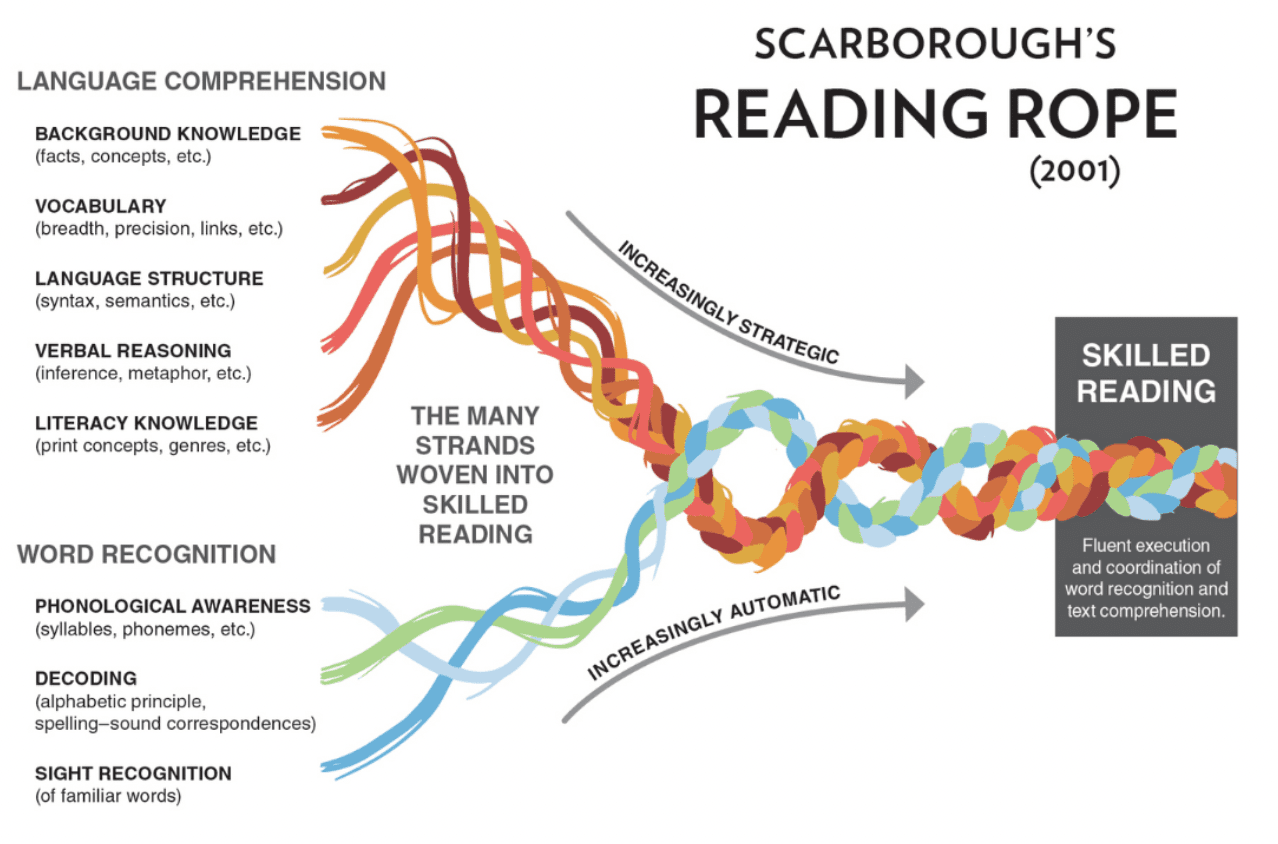
Learning to spell is a key ingredient to becoming a good reader and is far more intricate than just memorizing words. Catherine Snow et al. (2005) summarize the real importance of spelling for reading as follows: “Spelling and reading build and rely on the same mental representation of a word. Knowing the spelling of a word makes the representation of it sturdy and accessible for fluent reading.” Encoding (spelling) is a developmental process that impacts fluency, writing, pronunciation, and vocabulary. Fluency is best developed through a combination of mastering systematic phonics, practicing high frequency words, and repeated readings (Moats, 1998; LeBerge & Samuels, 1974; Rasinski, 2009).
As students begin to master phonics, it is advantageous to use those skills to practice the 300 high frequency words that make up 65% of all texts (Fry, 1999). When the relationship between spelling and reading is conveyed, students gain a better understanding of the code and demonstrate gains in reading comprehension (Moats, 2005), vocabulary (Moats, 2005), fluency (Snow et al., 2005), and spelling (Berninger, 2012).
How Does Spelling Shed Use The Science of Spelling to Deliver Effective Spelling Lessons?
To deliver effective spelling lessons that align with the principles of the Science of Spelling, we must focus on research-backed approaches. This means teaching strategies rather than memorizing words. These strategies include direct instruction, word study, and practice. Spelling Shed lists were developed by applying the Science of Reading research and follow a systematic progression of phonics and word study skills typically addressed in each grade level.
Spelling Shed supports differentiated learning, allowing students to progress at their own pace and receive activities tailored to their individual needs. This personalized approach aligns with the Science of Reading's emphasis on accommodating diverse learning styles and abilities.
At Spelling Shed, every lesson has a main objective from the national and state standards. We use word study and the latest spelling research to effectively teach spelling. The timing is flexible to fit with your school’s needs. Spelling Shed provides children with multiple methods for approaching spelling. Each lesson is planned and has resources, including a lesson plan, a lesson presentation, and worksheets.
At the beginning of each Stage, there is an intentional spiral review of skills expected to have been acquired in the previous Stage, but they also include words of increasing difficulty. Throughout the progression, new and more advanced concepts and skills are delicately intertwined within the review. This aids in linking past learning to the new concept and skill and reinforces and solidifies learning. If students are struggling with a particular skill, teachers can use previous Stage lists, which will have a more in-depth focus to match students’ needs. The majority of the words selected for each list contain only the phoneme-grapheme correspondences (PGC) that have been previously reviewed to avoid cognitive overload, help ensure focus, and attain mastery of the skill at hand.
Practicing to read high-frequency words is essential to becoming a fluent reader, but not by memorizing the whole word. Brain research shows that strong readers, even when they process a written word, such as “instantaneously,” are reading by sounds. Researchers have repeatedly demonstrated that readers who read fluently are able to map phonograms to their sounds automatically. The process occurs so quickly that it appears they are reading “by sight” (Ehri & Snowling, 2004). Most high-frequency words are decodable and are more efficiently taught alongside the corresponding phonetic patterns. When students use their knowledge of the sounds to learn and master high-frequency words, they simultaneously strengthen the skills that will enable them to read thousands more.
The Linguistic Tapestry
An effective speller draws upon the entire rich linguistic tapestry of a word to spell it correctly. The threads of this tapestry can be identified as phonological knowledge, orthographic knowledge, morphological knowledge, etymological knowledge, and visual knowledge. (Apel et al., 2004a, b; Henry, 1989; Masterson and Apel, 2010).
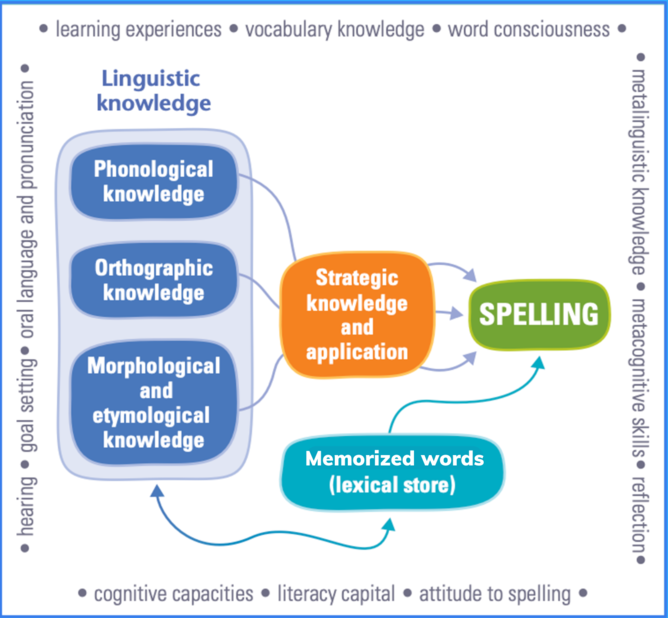
Phonological Knowledge
This is simply knowing the phonemes (sounds) and understanding how to represent them as graphemes (letters). Using Spelling Shed, students will be systematically taught the different graphemes for each phoneme.
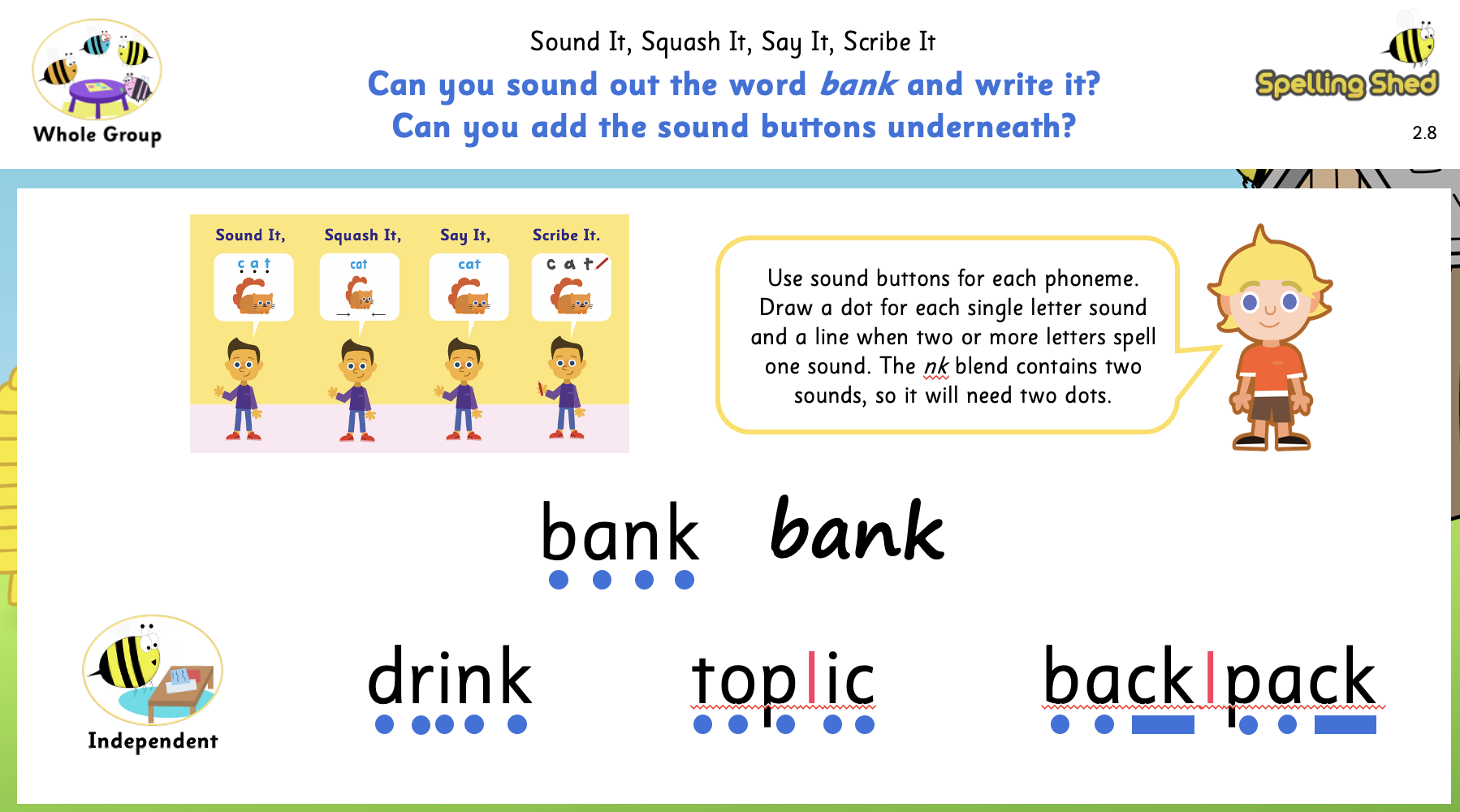
Orthographic Knowledge
“Ortho” meaning “correct” and “graph” meaning “to do with writing”. Orthography is the spelling system of a language. It is the patterns the language can use.
“Alongside phonological knowledge, students must have orthographic knowledge, that is, understanding which letter sequences are both possible and plausible in English.” Adoniou (2024, p. 146)
Let's take “drip” as an example. It can’t be spelled “dd” with /d/ because “dd” is most often in the middle of words or before a suffix. It would never be at the beginning of a word.
“Orthographic mapping is the cognitive process by which readers associate speech sounds with written letters (phoneme-grapheme associations) in a written word to store it for immediate retrieval “on sight”.” Mather & Jaffe (2021, p. 15-16)
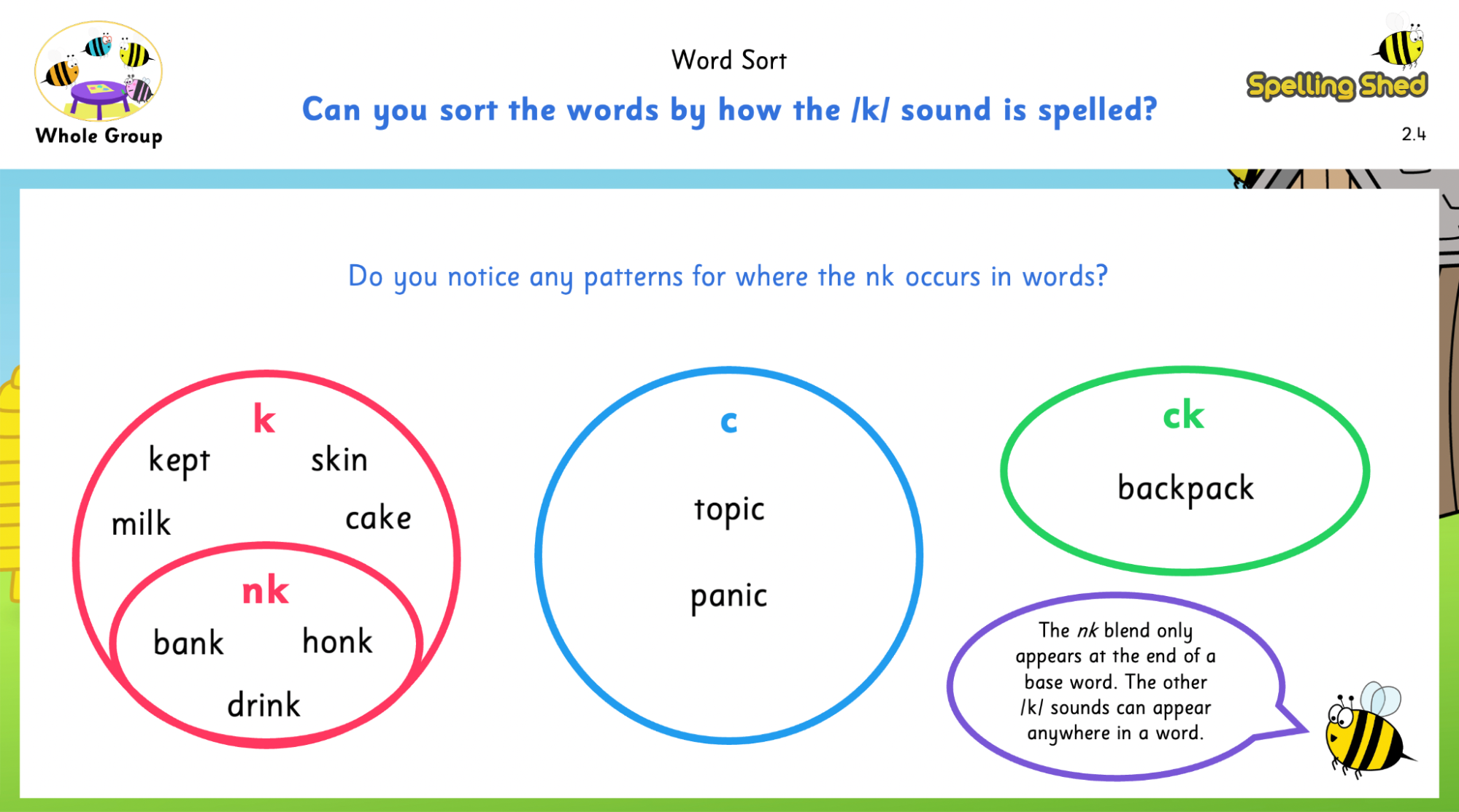
As it is a cognitive process, it is not something you can directly teach; however, you can use methods that support orthographic mapping. This might include breaking down words in different ways: sound buttons, Elkonin boxes or syllables, and looking at the positional best fit of words.
Teaching morphemes and word origins helps students understand the meaning of words at a deeper level, which helps them connect to and recognize unfamiliar words. This means that explicit and systematic spelling instruction can increase vocabulary acquisition.
Morphological and Etymological Knowledge
“Visual memory is dramatically better when meaning can be attached to the to-be-remembered pattern.” Bowers & Bowers (2017, p.132)
Morphology and etymology are important aspects of language that can significantly aid in learning to spell correctly.
Understanding Word Structure: Morphology
Morphology deals with the structure of words and how they are formed from smaller units called morphemes (the smallest units of meaning). Understanding morphology helps children break down words into meaningful parts, such as prefixes, suffixes, and root words. Knowing common prefixes and suffixes can provide clues about the meaning of a word and its spelling. For example, the prefix "un-" often indicates negation (e.g., unhappy,) and recognizing this can help in spelling related words.
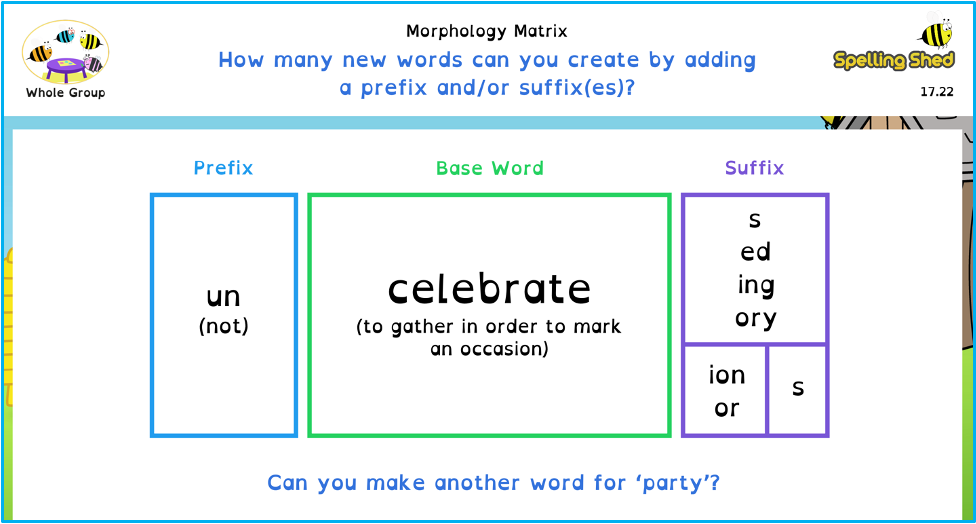
Identifying Word Origins: Etymology
Etymology is the study of the history and origins of words. Knowing the origin of a word often provides insight into its spelling and meaning; e.g., “ch” can be pronounced as /k/ in words such as choir, school, and stomach. Words that pronounce “ch” as /k/ are often Greek in origin. Words with similar roots or bases often have similar spellings. For instance, if you know that "bene-" means "good" or "well" (as in "beneficial"), you can apply this knowledge to spell and understand other words with the same prefix, such as "benefit" or "benevolent."
Learning morphology and etymology enhances vocabulary. As students become familiar with root and base words, prefixes, and suffixes, they can more easily recognize and learn new words.
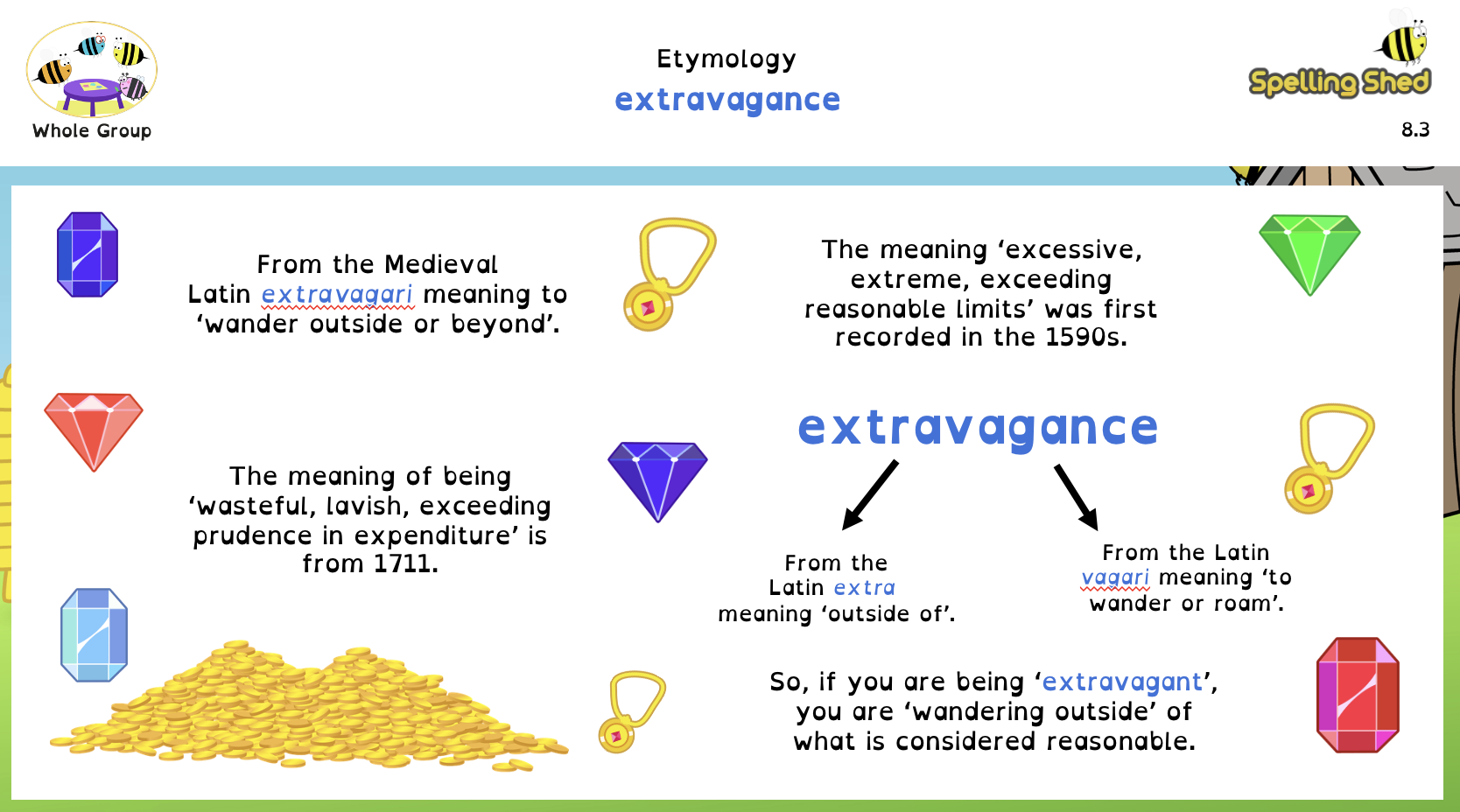
Memorized Words (Lexical Store)
“In order to spell well, children need to learn how to strategically use knowledge about phonology, orthography, morphology, and etymology. It is also a visual activity that involves the laying down and retrieval of visual representations of words and word parts in the memory.” Oakley & Fellowes (2016, p.1)
Research shows that visual memory is dramatically better when meaning can be attached to the to-be-remembered pattern. As spellers, we build up a mental lexicon. This is a bank of words we have committed to our visual memory and can spell almost automatically.
Effective spelling instruction teaches strategies that support spelling skills. Often, we rely heavily on visual memory for spelling, but there is much more to it than that. Word study directly teaches the linguistic skills that contribute not only to effective spelling but also to reading and further literacy skills such as spoken language.
Strategic Knowledge and Application
We often start with explicit, systematic phonic instruction. However, in later years, this is frequently disregarded. This is best demonstrated using the overlapping waves theory (Siegler, 1996). Wave theory explains that as children grow up and experience different things, they rely on different strategies to learn new things.
Direct instruction should be explicit and systematic, teaching patterns of the English language as well as common exceptions.
This includes:
- Alphabetic Principle (an understanding that oral language can be converted to written language by using alphabet letters—graphemes)
- Spelling-Pattern Knowledge (phonics)
- Patterns, not ‘rules’
Word study involves teaching students strategies for decoding and encoding words, such as identifying morphemes, prefixes, suffixes, and roots.
This includes:
- Spelling variations based on word origins (etymology)
- Meaning (morphology)
Practice should be both guided and independent, giving children opportunities to apply their learning to new words and contexts. Additionally, it should also be differentiated, meaning different students will be given different activities or tasks to work on in order to meet their individual needs. It is also important to incorporate multisensory techniques and activities to build a broader understanding of a concept.
As the concepts and skills advance in difficulty in Spelling Shed Stages 2–5, the importance of teaching the etymology and morphology of words increases. As Venesky (1967) stated, “The simple fact is that the present orthography is not merely a letter-to-sound system riddled with imperfections, but instead a more complex and more regular relationship wherein phoneme and morpheme share leading roles.” Words are encoded by their relationship between sounds (phonemes) and meaning (morphology). Moats (2005) states, “Learning to spell requires instruction and gradual integration of information about print, speech sounds, and meaning—these, in turn, support memory for whole words, which is used in both spelling and sight (automatic) reading."
Find Out More:
Spelling Shed enables learning to happen anywhere and everywhere, giving teachers the peace of mind that students can learn and get practice unhindered.
For more information on the ways Spelling Shed ensures effective teaching of spelling, visit our blog or watch our webinar.
Sources:
- Moats, L., & Snow, C. (2005). How Spelling Supports Reading. American Federation of Teachers, 1–13.How Spelling Supports Reading by Louisa Moats
- Daffern, T., & Fleet, R. (2021). Investigating the efficacy of using error analysis data to inform explicit teaching of spelling. Australian Journal of Learning Difficulties (accepted). Investigating the efficacy of using error analysis data to inform explicit teaching of spelling | Tessa Daffern
- Berninger, V. “Evidence-based, developmentally appropriate writing skills k-5: teaching the orthographic loop of working memory to write letters so developing writers can spell words and express ideas.” Presented at Handwriting in the 21st century?: An educational summit, Washington, D.C. January 23, 2012.
- Ehri, L. and Snowling, M.J. (2004). Developmental variation in word recognition. In Stone, C.A., Silliman, E.R., Ehren, B.J., and Apel, K. (Eds.), Handbook of language and literacy: Development and disorders, pp. 433-460. New York: Guilford.
- Fry, E. B. (1999). 1000 Instant Words: The most common words for teaching reading, writing, and spelling. Westminster, CA: Teacher Created Materials.
- LaBerge, D., & Samuels, J. (1974). Toward a theory of automatic information processing in reading. Cognitive Psychology, 6, 293-323.
- Moats, L. (1998). Teaching decoding. American Educator, Spring/Sum, 1–8.
- Snow, C. E., Griffin, P., and Burns, M. S. (Eds.) (2005). Knowledge to Support the Teaching of Reading: Preparing Teachers for a Changing World. San Francisco: Jossey-Bass.
- Rasinski, T.V. “Introduction: Fluency: The Essential Link From Phonics to Comprehension.” Essential readings on fluency. Newark, Del.: International Reading Association, 2009. 1-10. Print.
- Venezky, R. L. (1967). English orthography: Its graphical structure and its relation to sound. Reading Research Quarterly, 75-105.
- A New Model for Teaching High-Frequency Words | Reading Rockets
- A New Phonics-Based Approach to Teaching High Frequency Words
- Teach “Sight Words” As You Would Other Words
- High-frequency words: some ways to teach and help students practice and learn them
- How Phonics Helps Your Child To Read
- II. Overlapping Waves Theory - Chen - 2000 - Monographs of the Society for Research in Child Development - Wiley Online Library






